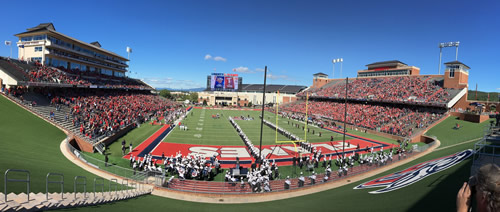Liberty University Opens Renovated Williams Stadium
Liberty University in Lynchburg, VA, recently celebrated the grand opening of its renovated Williams Stadium. The stadium was expanded and improved in less than a year to support the Flames’ advancement to the NCAA Division I Football Bowl Subdivision, formerly known as Division I-A.

Woolpert provided the sports architectural services for the $32 million project and retained Odell Associates Inc. as design architects. The stadium redevelopment included the addition of 6,000 new seats and a press box, a new concourse level and berm, videoboard, restrooms, concessions, camera platforms, road improvements, and a host of other amenities, including improved WiFi performance.